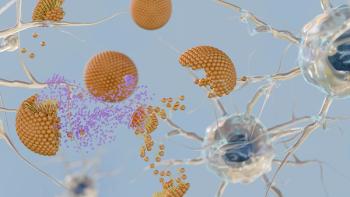
- BioPharm International-02-09-2006
- Volume 2006 Supplement
- Issue 1
Flexible Methodology for Developing Mammalian Cell Lines
The speed at which a recombinant protein product progresses into clinical trials is of vital importance for both small biotechnology companies as well as the biopharma groups of large pharmaceutical companies. For mammalian cell lines, two major impacts on the project timeline are the ability to quickly identify a product candidate and subsequently produce a high-expressing cell line for that product. The advent of various computer-based protein design methodologies and antibody discovery technologies for developing protein therapeutics has resulted in large numbers of protein or antibody variants that must be screened to identify the best clinical candidate.
The speed at which a recombinant protein product progresses into clinical trials is of vital importance for both small biotechnology companies as well as the biopharma groups of large pharmaceutical companies. For mammalian cell lines, two major impacts on the project timeline are the ability to quickly identify a product candidate and subsequently produce a high-expressing cell line for that product. The advent of various computer-based protein design methodologies and antibody discovery technologies for developing protein therapeutics has resulted in large numbers of protein or antibody variants that must be screened to identify the best clinical candidate.
For these variant candidates, proper screening requires milligram levels of protein production in mammalian cells for testing candidate material. This testing is initially performed in vitro, but in many instances animal studies are required for identification of the best potential clinical candidate. Animal studies can require multi-gram levels of the protein variants. Production and screening of these variants and selection of a final candidate is a time-consuming process in most research groups, and generally conflicts with what are now common aggressive timelines for moving products forward into the clinic. Typically, the initial variants are produced from a transient expression system, and then after clinical candidate selection, the cell line development process is restarted, a stable cell line is produced, and the final clinical candidate is master cell banked for manufacturing. The GPEx (Gene Product Expression) technology allows protein variants to be screened as part of the manufacturing cell line generation process. Milligram to multi-gram levels of protein are produced from an initial stable pool of clonal cell lines for variant characterization and selection. Final clonal cell line selection from this pooled line either proceeds in parallel with variant in vitro/in vivo screening or after clinical candidate selection has been completed. This method of variant selection eliminates the need for a total restart in cell line development after the clinical candidate has been identified.
The GPEx technology utilizes retrovectors to stably insert single copies of genes into dividing mammalian cells.1 Retrovectors deliver genes coded as RNA that, upon entry into the cell, are reverse-transcribed to DNA and integrated stably into the host cell genome. Two enzymes, reverse transcriptase and integrase, provided in the vector particle, allow conversion to DNA and gene insertion. These integrated genetic inserts are maintained through subsequent cell divisions as if they were endogenous cellular genes.2
Characteristics of GPEx Technology
- The gene inserts target "active" regions of the cell genome allowing for high levels of protein production from the cell pools and lines.3, 4, 5
- Antibiotic selection and gene amplification are not required, resulting in shorter clonal cell line development timelines.
- Stable cell pools producing milligram to gram quantities of variant proteins prior to selection of a high-expressing clone allows for screening of protein variants and optimal selection of final clinical candidates.
- GPEx technology inserts each copy of the transgene at a different genomic location, producing very stable gene insertions and stable expression from both pooled and clonal selected cell lines.
Figure 1. Recombinant Protein Cell Line Development Method.
CHO Cell Line Development
GPEx cell lines expressing recombinant proteins and antibodies are produced as shown in Figures 1 and 2. For generation of antibody producing cell lines, an initial transduction of Chinese hamster ovary (CHO) cells is performed using a retrovector containing the light chain (LC) gene. The LC expressing pool of cells is then transduced with a retrovector containing the heavy chain (HC) gene. Upon completing a single transduction, or both LC and HC transductions in the case of antibodies, the resulting pool of cells produces functional protein. These stable pools can be expanded for protein production and analysis. Single cell clones are isolated from the pool using limited dilution cloning. Cells are only cultured in serum-free medium. However, 2% fetal bovine serum is typically used for approximately 10-14 days during the limited dilution cloning step. Cells are routinely cultured at 37° C and 5% CO2. Fed-batch development is completed with a single round of analysis using generic conditions and commercially available media/supplements (HyClone, Logan, UT).
Figure 2. Antibody Cell Line Development Method.
Pooled Cell Line Production
The ability to produce substantial amounts of protein prior to clonal selection is an advantage of this cell line development method. Stable cell pools producing 20–280 mg/L of over 40 different proteins in standard serum-free overgrowth cultures without feeding have been generated using GPEx. Transfer of the pools to fed-batch conditions results in a 2–4 fold increase over the initial production levels. These production levels allow milligram to multi-gram quantities to be made from 1–100 liter production vessels at this early stage in the cell line development process. A timeline for production of protein variants from pooled cell lines is shown in Figure 3.
Figure 3. Process Timeline for Variant Production From a Pooled Cell Line.
Clonal Cell Line Production and Manufacturing
After completing limited dilution cloning and initial clonal selection on pooled cell lines, top clones are identified and analyzed in generic fed-batch conditions. The top clone is identified from the fed batch analysis and moved into bioreactor manufacturing using the same fed-batch conditions. Results of fed-batch bioreactor runs for nine different antibody producing cell lines are indicated in Table 1. Protein production, specific productivity (picograms/cell/day), and maximum cell density were recorded for each batch. The ability to manufacture clinical material without detailed cell line process development and achieve greater than 1 g/L levels of production dramatically reduces timelines for clinical product production. More detailed process development can then be performed on the cell line while early clinical analysis is being performed. A timeline from gene to master cell bank candidate selection is shown in Figure 4.
Figure 4. Process Timeline From cDNA to Start of Master Cell Banking Using the GPEx Cell Line Development Method
Summary
GPEx cell line engineering technology is a flexible cell line development methodology capable of shortening the time to clinic for recombinant proteins that require production in mammalian cells. Large quantities of recombinant proteins/antibodies can be produced from pooled cell lines along the path to candidate cell line selection, which in turn shortens timelines and eliminates the need for separate, large-scale transient transfection experiments. GPEx cell lines producing antibodies express at levels of 0.7–1.4 g/L in fed-batch bioreactor manufacturing using generic conditions. These levels are on the upper end of production needed to produce clinical material and will improve with more detailed cell line process development.
Table 1. Clonal Cell Line Production During Bioreactor Manufacturing.
Paul Weiss, Ph.D, M.B.A., is president of the Gala Biotech business unit of Cardinal Health PTS, Gregory Bleck, Ph.D., is director of molecular biology, and Jennifer Franklin is quality control supervisor. Cardinal Health PTS, 8137 Forsythia St., Middleton WI, 1.608.824.9920, fax 1.608.824.9930,
References
1. Bleck GT. An alternative method for rapid generation of stable, high-expressing mammalian cell lines. Bioprocessing Journal 2005:September/October.
2. Andrake MD, Skalka AM. Retroviral integrase, putting the pieces together. J. Biol. Chem. 1996:271;33;19633-19636.
3. Wu X, Li Y, Crise B, Burgess SM. Transcription start regions in the human genome are favored targets for MLV integration. Science 2003:300;1749-1751.
4. Mitchell RS, Beitzel BF, Schroder ARW, Shinn P, Chen H, Berry CC, Ecker JR, Bushman FD. Retroviral DNA integration: ASLV, HIV and MLV show distinct target site preferences. PLOS Biology 2004:2;8;1127-1137.
5. De Palma M, Montini E., Santoni de Sio FR, Benedicenti F, Gentile A, Medico E, Naldini L. Promoter trapping reveals significant differences in integration site selection between MLV and HIV vectors in primary hematopoietic cells. Blood 2005:105;6; 2307-2315.
Articles in this issue
almost 20 years ago
Efficient Small-Scale Production of Proteinsalmost 20 years ago
Expression of Recombinant Proteins in Yeastalmost 20 years ago
Radical Changes in the Engineering of Synthetic Genes for Protein Expressionalmost 20 years ago
Applying Fusion Protein Technology to E. ColiNewsletter
Stay at the forefront of biopharmaceutical innovation—subscribe to BioPharm International for expert insights on drug development, manufacturing, compliance, and more.





